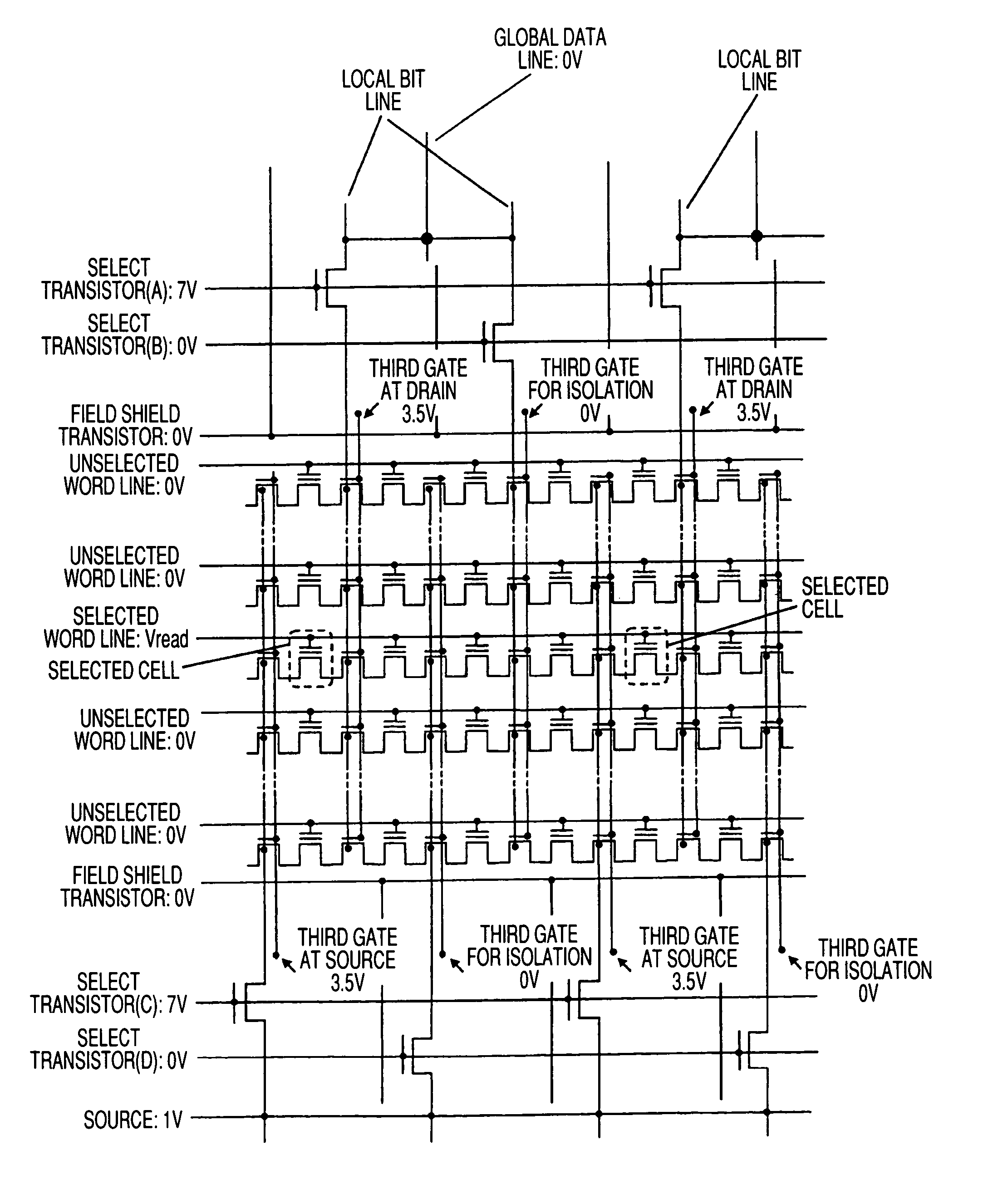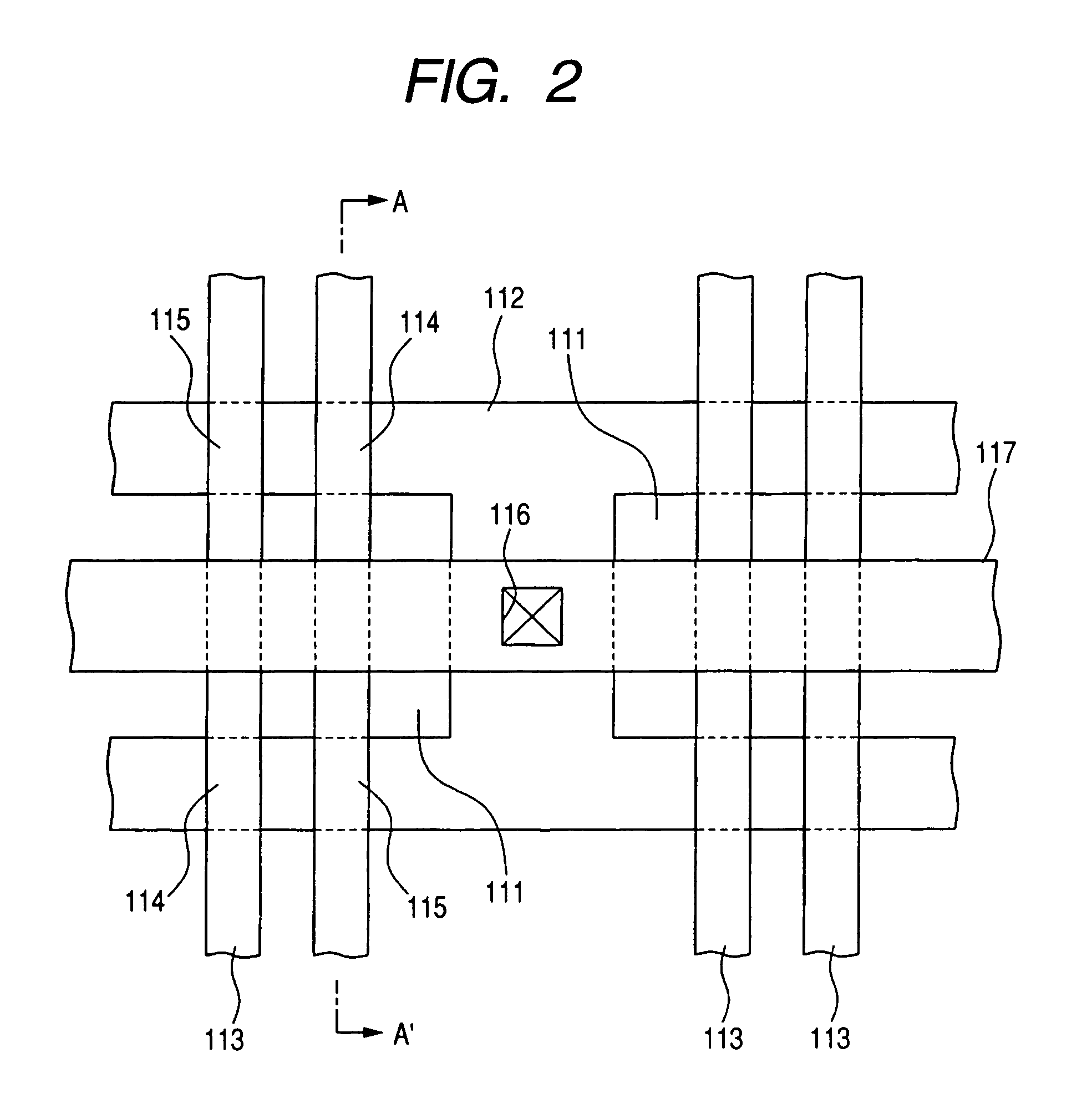Nonvolatile semiconductor memory device
a semiconductor memory and non-volatile technology, applied in the direction of instruments, printing, other printing devices, etc., can solve the problems of subject memory cells not being driven, local bit line selection is disabled, and dislocation might occur, so as to reduce the pitch of bit lines and high production yield
- Summary
- Abstract
- Description
- Claims
- Application Information
AI Technical Summary
Benefits of technology
Problems solved by technology
Method used
Image
Examples
first embodiment
[0057]FIG. 4 shows a partial top view of a semiconductor substrate of a nonvolatile semiconductor memory device in accordance with the first embodiment. FIGS. 5 through 7 show cross sectional views of the semiconductor substrate along the line A-A′, the line B-B′, and the line C-C′in FIG. 4, respectively.
[0058] The nonvolatile semiconductor memory device in this first embodiment has memory cells of a so-called flash memory. In the select transistor region adjacent to each memory cell region, a gate 223 of a field shielding transistor is formed. Between the gates 223 of adjacent field shielding transistors, a gate 224 of a select transistor is disposed in two steps so as to correspond to each transistor. The two steps of the gate 224 are connected to each other by a wiring 226 through a contact hole 225 (FIGS. 4 and 5). The gate 223 of each field shielding transistor is insulated from both of the first conductive type first semiconductor region (well) 201 and the first conductive ty...
PUM
 Login to View More
Login to View More Abstract
Description
Claims
Application Information
 Login to View More
Login to View More - R&D
- Intellectual Property
- Life Sciences
- Materials
- Tech Scout
- Unparalleled Data Quality
- Higher Quality Content
- 60% Fewer Hallucinations
Browse by: Latest US Patents, China's latest patents, Technical Efficacy Thesaurus, Application Domain, Technology Topic, Popular Technical Reports.
© 2025 PatSnap. All rights reserved.Legal|Privacy policy|Modern Slavery Act Transparency Statement|Sitemap|About US| Contact US: help@patsnap.com



